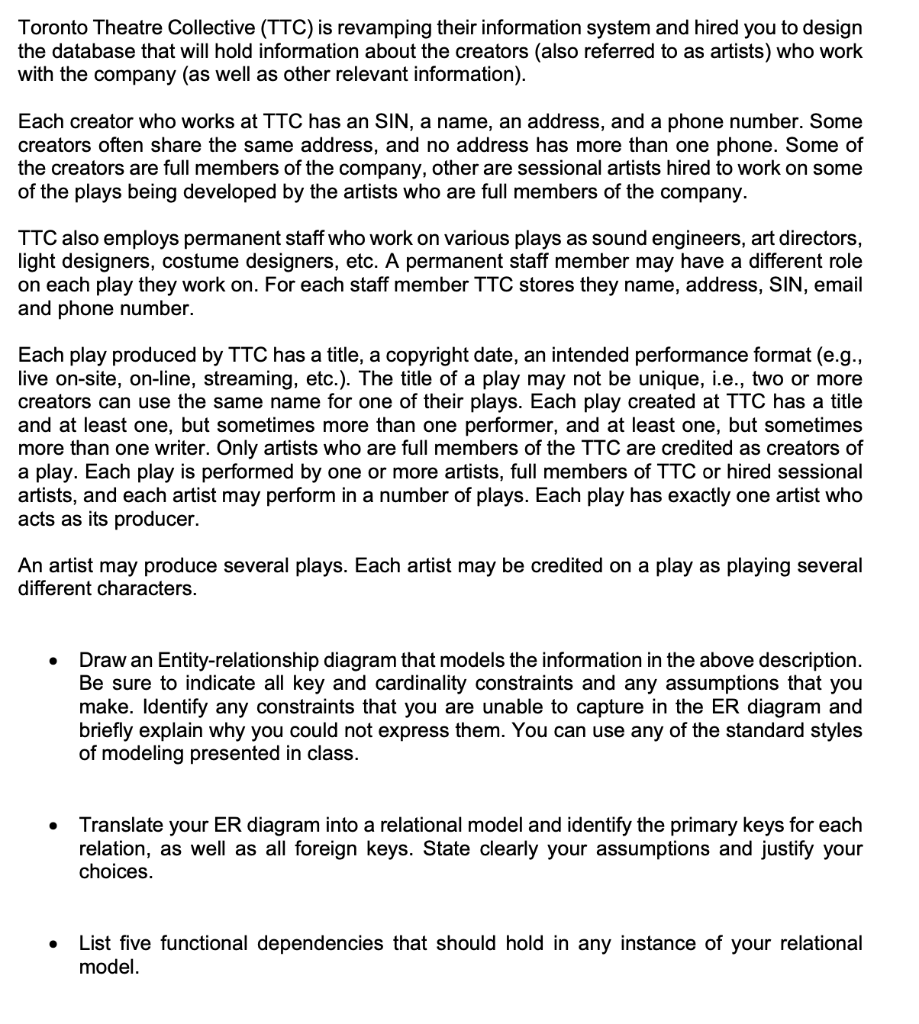
Toronto Theatre Collective (TTC) is revamping their information system and hired you to design the database that will hold information about the creators (also referred to as artists) who work with the company (as well as other relevant information). Each creator who works at TTC has an SIN, a name, an address, and a phone number. Some creators often share the same address, and no address has more than one phone. Some of the creators are full members of the company, other are sessional artists hired to work on some of the plays being developed by the artists who are full members of the company. TTC also employs permanent staff who work on various plays as sound engineers, art directors, light designers, costume designers, etc. A permanent staff member may have a different role on each play they work on. For each staff member TTC stores they name, address, SIN, email and phone number. Each play produced by TTC has a title, a copyright date, an intended performance format (e.g., live on-site, on-line, streaming, etc.). The title of a play may not be unique, i.e., two or more creators can use the same name for one of their plays. Each play created at TTC has a title and at least one, but sometimes more than one performer, and at least one, but sometimes more than one writer. Only artists who are full members of the TTC are credited as creators of a play. Each play is performed by one or more artists, full members of TTC or hired sessional artists, and each artist may perform in a number of plays. Each play has exactly one artist who acts as its producer. An artist may produce several plays. Each artist may be credited on a play as playing several different characters. Draw an Entity-relationship diagram that models the information in the above description. Be sure to indicate all key and cardinality constraints and any assumptions that you make. Identify any constraints that you are unable to capture in the ER diagram and briefly explain why you could not express them. You can use any of the standard styles of modeling presented in class. Translate your ER diagram into a relational model and identify the primary keys for each relation, as well as all foreign keys. State clearly your assumptions and justify your choices. List five functional dependencies that should hold in any instance of your relational model







